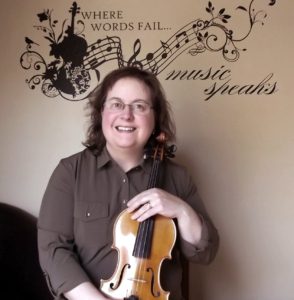
My dad ran the in-house print shop for Seattle Public Schools, and also had a home publishing business with a printing press in our basement. I don’t remember ever seeing him wearing industrial earmuffs or earplugs, either at his noisy day job or at home. Predictably, his hearing began to fail in his 50’s and he wore hearing aids the last 20 years of his life.
Over the course of the Fall-to-Spring teaching/performing season, I notice the low background ringing in my ears gradually increasing after each day of teaching, orchestra rehearsal, or gig in an amplified setting; each recital, concert, or blockbuster movie. By March, it’s harder to ignore the high-pitched whine. I know from experience that I need to minimize the decibels entering my ears for a while before the nerve endings will calm down. (18 hours of quiet is recommended in the resource linked below!) I also “should know better” and not wait for the ringing to tell me I need to protect my hearing.
Enter the earplugs! There are models specifically for musicians. I’ve used Earpeace High Fidelity, and most recently a set of Minuendo Lossless adjustable earplugs. I feel the relief as soon as they are in, and even used them successfully during a recent set of orchestra rehearsals of Beethoven’s 5th. Yes, the earplugs do dampen the experience of note timbre and volume, but I am still able to play in tune and to blend with other musicians. I also become more aware of the vibration-feedback from my violin and bow, telling me how much resonance I am producing to augment the muted notes I can hear. It’s like wearing gloves on a cold day to do something that you’d usually use bare hands for; not ideal, but workable.
I think it’s important to destigmatize the wearing of ear protection by working musicians, starting with our students. If you choose to wear hearing protection in lessons, let your students observe this, and explain why! Teens wear earbuds constantly as fashion accessories now, so they need to be especially aware of the long-term effects of high noise exposure. There are smartphone apps for immediate feedback on the decibel levels of our environments, so all can take appropriate precautions.
For further reading: NIOSH, the CDC division that advises OSHA, published a helpful bulletin in 2015 entitled Reducing the Risk of Hearing Disorders among Musicians.
To your good aural health!
Jane Melin, NCTM
WSMTA Vocal/Instrumental Chair
[email protected]